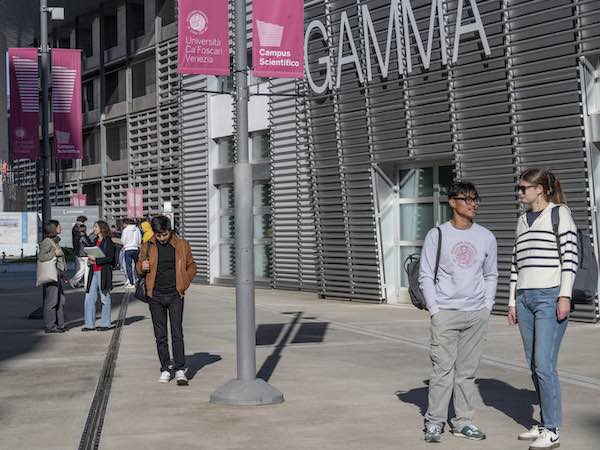The exhibition Shamans. Communicating with the invisible opened on 16 December at MUSE, Science Museum of Trento. It showcases for the first time a rare selection of objects belonging to the Sergio Poggianella Foundation, and takes us into the complex story of shamanism with exhibits coming from China, Siberia and Mongolia.
The exhibition - open from 17 December to 30 June 2024 - brings together MUSE, MART - Museum of Modern and Contemporary Art of Trento and Rovereto, and METS - Trentino Ethnographic Museum San Michele all’Adige. The scientific director is Stefano Beggiora, from the Department of Asian and North African Studies at Ca' Foscari University and lecturer in Ethnography of Shamanism. Beggiora is one of the few Italian experts on shamanism.
Beggiora collaborated with Lia Zola, from the University of Turin, on selecting exhibits and on the concept of the anthropological section of the exhibition, coordinating a board of experts from various universities. A meaningful and immersive journey cutting through anthropology, ethnography, psychology, archaeology and art was created, to discover the places, rituals, languages and objects of the Mongolian and Siberian cultures that practise shamanism to this day.
The exhibiton
'The largest part of the exhibition is located in the Palazzo delle Albere, in Trento, which is part of MUSE and is managed by MART and MUSE together,' says Beggiora. The exhibition is divided into two main sections: my colleagues and I contributed to the one mainly focusing on anthropology, while the other displays works by various modern and contemporary artists who have created works inspired by shamanism. The idea was that of approaching environment and ecology related contemporary art through the lens of traditional shamanism. A third core of the exhibition is set up at the Trentino ethnographic museum, METS, in San Michele all'Adige. The latter is a kind of spin-off of the exhibition, called Shamans. Téchne, spirit, idea. It displays shamanic objects from the Poggianella collection in a fascinating juxtaposition with contemporary art and with traditional folklore.
The project
"This exhibition takes us back to the origins of shamanism, in the Eurasian continent, and particularly to 17th century Siberia. For the nomadic peoples of the steppe, shamans were medicine men, healers, and a sort of psychoanalysts ante litteram, in that they were able to catalyse and scatter the community’s anxieties and fears. The collection we are presenting in Trento is unique, unparalleled in Italy. It includes cult objects such as the frame drum, amulets, textiles and extraordinary complete shamanic trousseaus. The visitor will walk through history - some of the archaeological finds date back to the Upper Palaeolithic - art, the environment and contemporary cults linked to shamanism. In addition to the artefacts, we have made available some multimedia materials, such as animation videos, as well as an immersive installation where the sound of a drum and a virtual walk through a forest give visitors an idea of altered consciousness experience. Furthermore, DNA tests were carried out on the objects’ animal components. This was made possible by the collaboration with MUSE, and it is a pioneering type of scientific research in this field. Testing confirmed that several materials of animal origin, such as wolf, goat, deer and ferret skin, and even a wolverine paw, went into the creation costumes, drums and various personal objects. All this is evidence of close contact with the typical Mongolian-Siberian fauna, but also of shamanism being permeated by totemic symbols of the animal world'.
In the coming months, Stefano Beggiora and Lia Zola will organise a series of lectures and free guided tours for the community of Ca' Foscari University, and an international conference on shamanism at the end of May at the METS ethnographic museum in San Michele in Trentino, with visits and events also at Palazzo delle Albere.
Full information on visits and opening hours is available on the MUSE website











